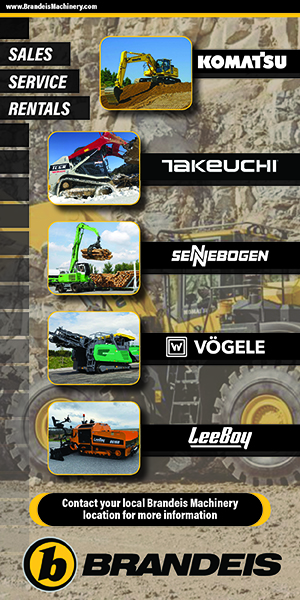When looking at rollers, the decision often revolves around whether a single drum roller or a double drum roller is the better choice. Let's dive into this comparison to help you make an informed decision for your next project.
Single Drum Rollers
Single drum rollers have a large drum at the front and two pneumatic wheels at the back. This design allows for effective compaction and maneuverability, making them ideal for a variety of terrains and tasks.
There are three types of single drum rollers. Smooth drum soil compactors have a singular smooth, steel drum on the front. They are better for working with materials like gravel, limestone, and asphalt. Padfoot and sheepsfoot rollers, on the other hand, have jagged edges protruding from the drum. These teeth make them better for working with semi-cohesive materials like clay, mud, and silt. Padfoot and sheepsfoot compactors are more common when working in areas with a higher water table.

| Your local Gomaco dealer |
|---|
| Fabick CAT/MO |
It’s important to use a single drum roller for the environment it’s designed for. For example, the metal knobs on a padfoot roller would simply churn granular soils like gravel and limestone, as opposed to flattening them. Smooth drums, on the other hand, aren't able to provide enough force to flatten mud and silt; the materials would simply stick to the face of the drum.
Double Drum Rollers
Double drum rollers (also called tandem rollers, road rollers, and asphalt rollers) have two cylindrical drums — one at the front and one at the rear. This design allows them to compact asphalt and subgrade with more efficiency. And because they are used to compact asphalt, they often have more powerful engines. Road rollers come in a variety of sizes with drum widths ranging from 35 inches to 84 inches.
Some examples of construction projects where double drum rollers are a must-have would be multi-lane roadwork, highway paving, and parking lot construction. While single drum rollers and asphalt rollers are both used on roadwork projects, single drum rollers are typically used for the layers below the asphalt whereas road rollers are used for the asphalt.
Single Drum Rollers
The benefits of single drum rollers include:
- Maneuverability — Single drum rollers are more agile. They can turn in a small radius and operate on rougher terrains, making them suitable for projects with tight spaces.
- Versatility — They excel in a variety of terrains, from granular soils to non-cohesive soils, depending on the type of drum attached.
- Prep phase — They assist in readying sites before construction, such as leveling and preparing the ground for foundations and roads.
The drawbacks of single drum rollers include:
- Limited efficiency on cohesive soils — They face challenges in compacting cohesive soils like clay and mud.
- More passes required — Because they only have one drum, they can be less efficient than double drum rollers, requiring more passes for full compaction.
Double Drum Rollers
The benefits of double drum rollers include:
- Enhanced compaction — Compaction efficiency is significantly increased with two drums working in tandem.
- Ideal for cohesive soils — They excel in compacting cohesive soils due to their increased weight distribution and wider set of drums.
The disadvantages of double drum rollers include:
- Less maneuverable — They might be less agile, making navigation through tight spaces more challenging.
- Terrain specific — Double drum rollers are often more suitable for flat and stable terrains.
It's also important to consider that single drum rollers can be fitted with padfoot or smooth drums, depending on the job requirements, giving them more versatility than double drum compactors.
There's no one-size-fits-all answer when comparing single drum and double drum rollers. Essentially, it comes down to understanding your project's unique requirements. Single drum rollers are best when working with a variety of soils and materials while double drum rollers are best suited for asphalt and the actual paving process.
Leading the way in e-commerce and marketplace solutions for heavy equipment rentals, Kevin Forestell is the CEO and Co-Founder of construction tech company DOZR. With DOZR, Kevin aims to bring heavy equipment within reach for anyone, anywhere, anytime, at the click of a button. For more information, visit DOZR.com.











































































